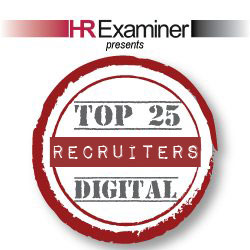W.T.F. Jobseekers? Get Real
September 27, 2010 4 Comments
 I know when you’re looking for a job or out of work, you need all the support you can get. You need encouragement and praise to keep motivated, but sometimes what you really need is some harsh love, this could be one of those occasions.
I know when you’re looking for a job or out of work, you need all the support you can get. You need encouragement and praise to keep motivated, but sometimes what you really need is some harsh love, this could be one of those occasions.
In my twitter stream recently, I’ve got increasingly frustrated by some comments from job seekers and some of the advice being giving. Here are the top 9 “W.T.F.” comments you really should ignore:
1: If the A.T.S. is too complicated, asks too many questions or takes too long to complete I drop out.
Reality: Many A.T.S.’s suck
Reality: The bigger the drop out the more chance you have of getting the job
Reality: You will not get 100% of the jobs you don’t apply for.
It might be frustrating but you need to stick with it. Employers understand mistakes, and if you are confused by the ATS, ask for help!
2: I only connect with people who send me personalised invites or who I know.
Reality: The number 1 source of hire is referral.
Reality: You never know who knows who till you are connected
Reality: The wider your network, the more chance it will deliver a job
Connect with everyone you can at first invite or finding, you can weed them out later if they are spammers or undesirable.
3: I avoid connecting with recruiters unless they have a job for me.
Reality: Recruiters get people jobs.
Reality: If there is anyway a recruiter can place you they will, it’s how they eat. They are however, not the welfare office or career coaches.
Reality: If a recruiter has a job for you, they will hunt you down.
Make as many recruiter contacts as you can. Don’t expect instant feedback and make it easy to work with you by being friendly and having a clear idea of what you want. Don’t give them a hard time if they have nothing for you now, and DON’T as was suggested, put the phone down on them if they don’t know a job/company inside out.
4: It’s pushy to ask for the job
Reality: Many hiring managers take not asking as not interested.
Reality: If you don’t ask, you won’t get. (My mum taught me that.)
Reality: The offer only goes to someone who is perceived to really want it.
Always ask: 1: What the next step is? the timetable for that? Any reservations they have about you and if you can have the next step.
5: Only interview for jobs and cultures that fit what you want.
Reality: Most job descriptions do not match the real job.
Reality: Job descriptions are often changed to fit the candidate once strengths are identified.
Reality: If you don’t go to the interview you will never know.
Don’t be the one that got away. Go for the interview!
6: Lock down your Facebook privacy settings.
Reality: Recruiters are increasingly sourcing candidates through Facebook.
Reality: Your privacy settings are not really private anyway. there are lots of ways in for the really determined.
Reality: The person who can refer you for a job is probably not a college friend or family member.
Clean up your profile if you’re worried about it. Talk to your friends on the phone. Complete your professional details on Facebook. Sign up for BranchOut, they just got a $6mn investment and the networks/job platform is growing quickly. Make it clear you want a job.
7: I don’t prepare for interview because I want to be natural
Reality: The more you prepare the more confident you will feel.
Reality: The more you know about the company and the job, the better questions you can ask and the closer you can present “fit.”
Reality: Hiring managers are impressed with prepared candidates who tell them why they want the job.
Success at interview is 80% in the preparation, only 20% in the presentation.
8: Why should I chase feedback. if they want me, they will contact me.
Reality: The one who gets the job is usually the one who wants it most.
Reality: Every contact reminds the hiring manager of you.
Reality: The jobs not filled till someone starts.
Follow up, communicate and ask for feedback. Express at every stage that you are interested. It’s not their job to hire you, it’s your job to get hired!
9: E-mail is the best way to communicate.
Reality: E-mails get ignored.
Reality: You can counter objections in a call
Reality: You can project enthusiasm in a call.
PICK THE PHONE UP. E-mail is for confirmation and cowards. Don’t be the latter!
That is the end of my rant. please add your own comments, examples of bad advice that make you say “W.T.F.” and anything else you want to add. Don’t forget to subscribe to this blog to keep getting tips. You can do so on the e-mail button. It’s quick and simple.
Be social in your job search,
Bill




